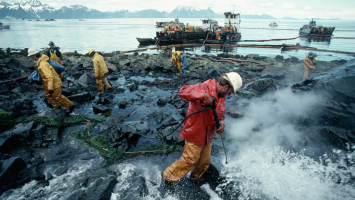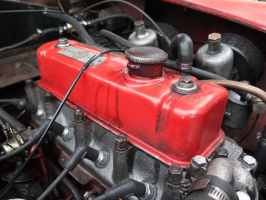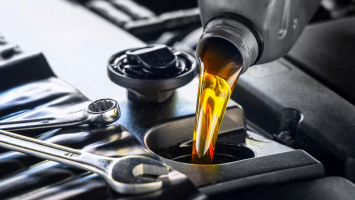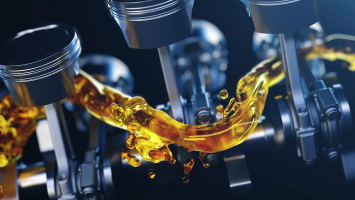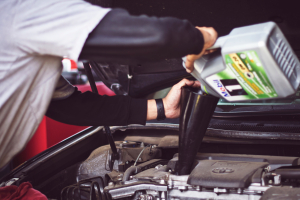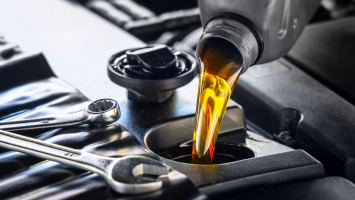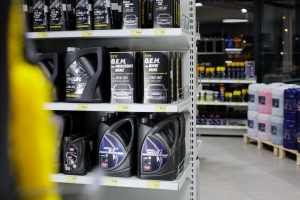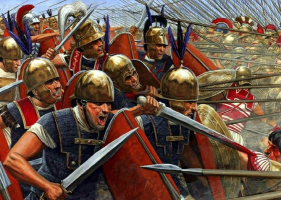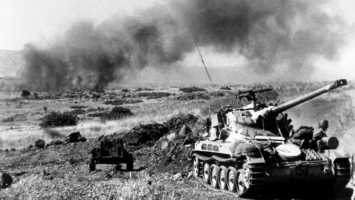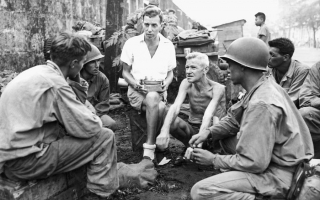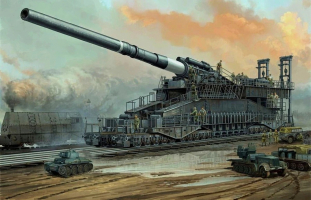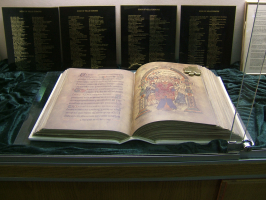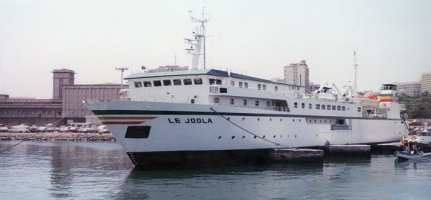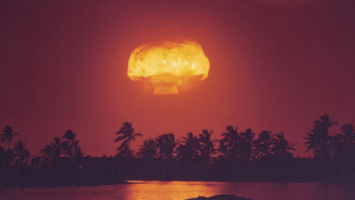Top 10 Biggest Oil Spills in History
Petroleum (or oil) has been utilized by humans for thousands of years in both healing and combat. As the oil demand increased, its refined products (such as ... read more...gasoline and diesel) started to be used to power cars, ships, and other types of transportation, and a global network of wells, ships, storage facilities, and pipelines expanded. Oil is occasionally released into the environment during the extraction of oil from the ground and transportation of it to refineries and other locations due to outdated and damaged equipment, mistakes made by people, and bad luck. So let's look at the largest oil spills in history in this article.
-
The Midway-Sunset Oil Field in Kern County, California, had the Lakeview Gusher, a pressured oil well explosion, in 1910. It caused the greatest unintentional oil spill in history, spewing 9 million barrels of crude oil over the course of 18 months. One of the biggest oil deposits in the country was Midway-Sunset. The Lakeview Oil Company anticipated finding natural gas and a modest amount of oil when drilling started. Instead, a major blowout resulted in storage tanks being overcrowded.
Workers created "hoods" in an attempt to restrict the oil fountain, but the strategy failed. Between 40,000 and 50,000 barrels of oil were being lost daily from the disaster. The oil well finally collapsed on itself on September 9, 1911, stopping the leak, which had been ongoing for the previous 18 months. Crude oil spilled in excess of 378 million gallons. Despite the substantial volume of oil that was spilled, there was virtually little environmental damage. Around Lakeview Well, there was a few kilometers of black mist, but thanks to the efforts of volunteers and employees alike, the spill's negative consequences were lessened. The majority of the oil soaked into the soil or evaporated after dikes were manually constructed to prevent it from contaminating the Buena Vista lake. Parts of the region are still covered in oil 100 years later, but there hasn't been much environmental harm reported.
When: 1910
Where:California, USA
Oil spilt: 378 million gallons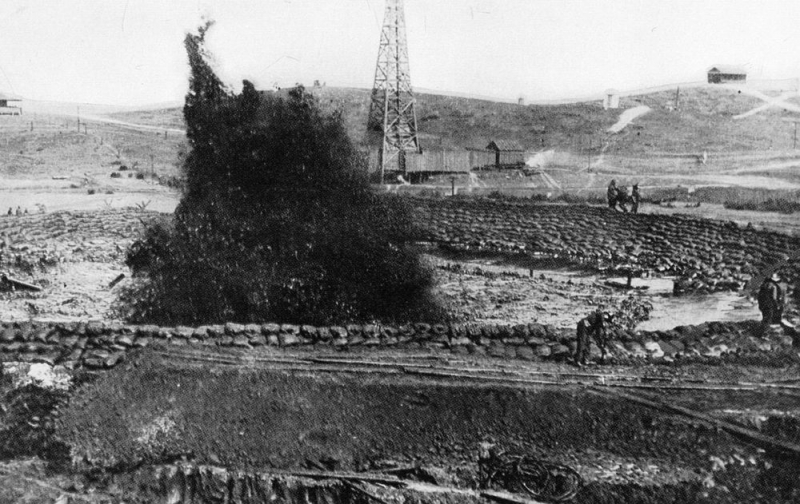
amusingplanet.com 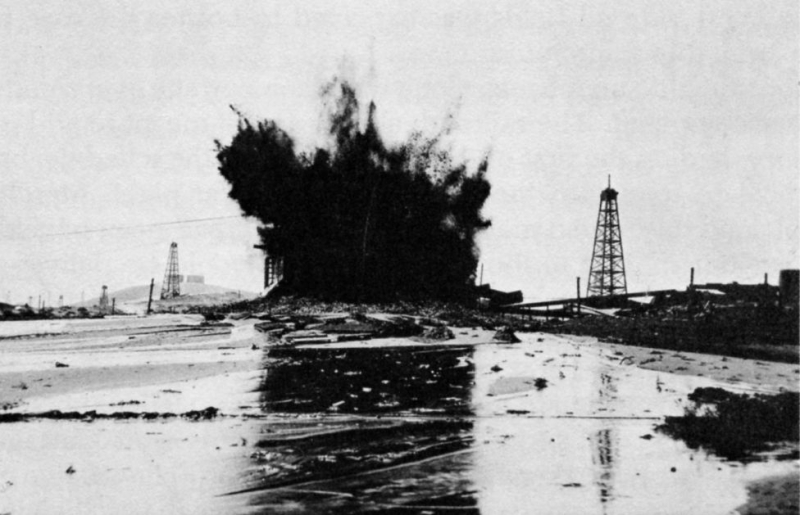
Amusing Planet -
One of the biggest oil leaks in history occurred as a result of the Gulf War in 1991, often known as the Persian Gulf oil spill or Gulf War oil spill. Iraqi soldiers allegedly started pouring oil into the Persian Gulf in January 1991 in order to thwart a U.S. coalition-led water landing on their beaches. Although initial estimates were fairly high, the leak probably involved 4,000,000 US barrels (480,000 m3). In the months that followed the disaster, the majority of cleanup efforts were concentrated on retrieving oil, while Saudi Arabia's heavily impacted beaches saw relatively little cleaning.
The spill will not have long-term environmental effects, according to a 1993 study. However, other studies since 1991 have reached the opposite conclusion, contending that the spill has harmed marine animals, ecosystems, and coastal sediments. The leak, which was regarded as an act of environmental terrorism, was a contentious political decision with consequences for the wider Gulf War and short-term harm to Kuwait and Saudi Arabia.
Most cleanup efforts after the spill focused on recovering the oil by skimming it off the water's surface. Hundreds of thousands of barrels of oil are thought to have been recovered by April 1991. However, the ongoing Gulf War, a lack of funding, inadequate equipment, and other factors made the cleanup process difficult. Very little cleanup was done on Saudi Arabia's beaches as a result of these obstructions and the fact that the majority of cleanup efforts were directed at recovering oil. Ken Wells of the Wall Street Journal reported that an estimated 375 miles (604 km) of shoreline were still covered in oil 14 months after the spill. Environmentalist groups worried about the long-term effects of the oil attacked the Saudi government for failing to pay attention to the country's beaches and other sensitive environments, such as mangrove forests and marshes.
When: 1991
Where: Persian Gulf
Oil spilt: 240 million gallons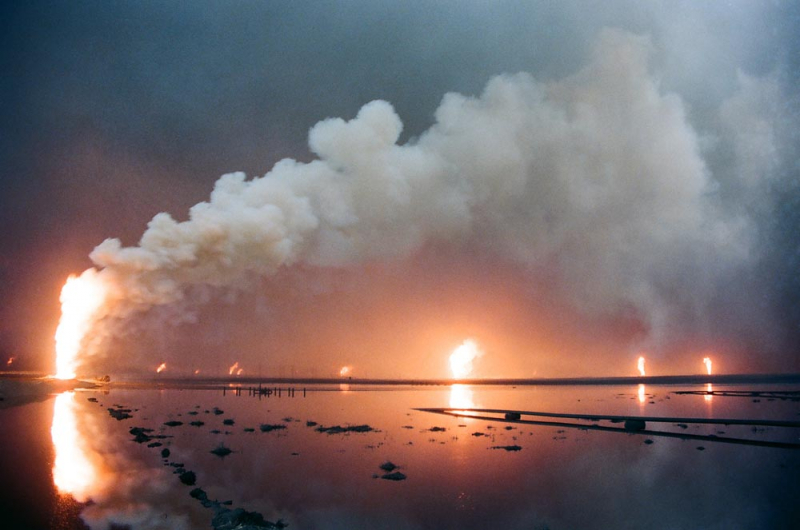
hughmcmanners.com 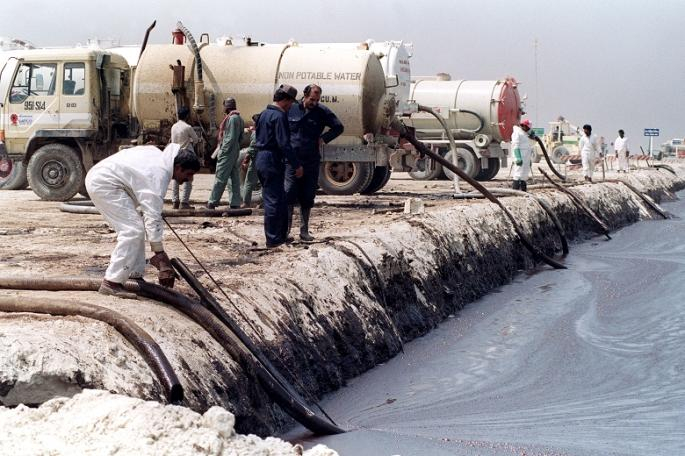
The Times -
The Deepwater Horizon oil spill, also known as the "BP oil spill", was an industrial catastrophe that started on April 20, 2010, in the Gulf of Mexico off the coast of the United States on the BP-operated Macondo Prospect. It is regarded as the biggest marine oil spill in the history of the petroleum industry and is estimated to have a volume 8 to 31% larger than the Ixtoc I oil spill, which also occurred in the Gulf of Mexico. The overall discharge was estimated by the US federal government to be 4,900 Mbbl (210 million US gal; 780,000 m3). The well was declared blocked on September 19, 2010, following multiple unsuccessful attempts to stop the flow.
Early 2012 reports said the well site was still leaking. One of the worst environmental catastrophes in human history is said to have occurred with the Deepwater Horizon oil leak. The reasons behind the explosion and record-breaking leak became the subject of several investigations. The United States Government report, which was released in September 2011, blamed BP in the majority but also rig operator Transocean and contractor Halliburton for the well's defective cement. A White House commission also held BP and its partners accountable for a number of cost-cutting measures and a weak safety system earlier in 2011, but it also came to the conclusion that the spill had "systemic" root causes and, in the absence of significant reform in both business practices and governmental policies, might well happen again.
BP and the US Department of Justice reached a settlement on federal criminal charges in November 2012, and BP pleaded guilty to 11 counts of manslaughter, two misdemeanors, and a felony count of lying to the US Congress. Additionally, BP consented to four years of government oversight of its safety procedures and business conduct, and the Environmental Protection Agency declared BP temporarily ineligible for new contracts with the American government. BP and the Department of Justice reached an agreement on record-breaking fines and other payments totaling $4.525 billion. As of 2018, the company had incurred more than $65 billion in costs related to clean-up, charges, and penalties.
When: 2010
Where: Gulf of Mexico
Oil spilt: 210 million gallons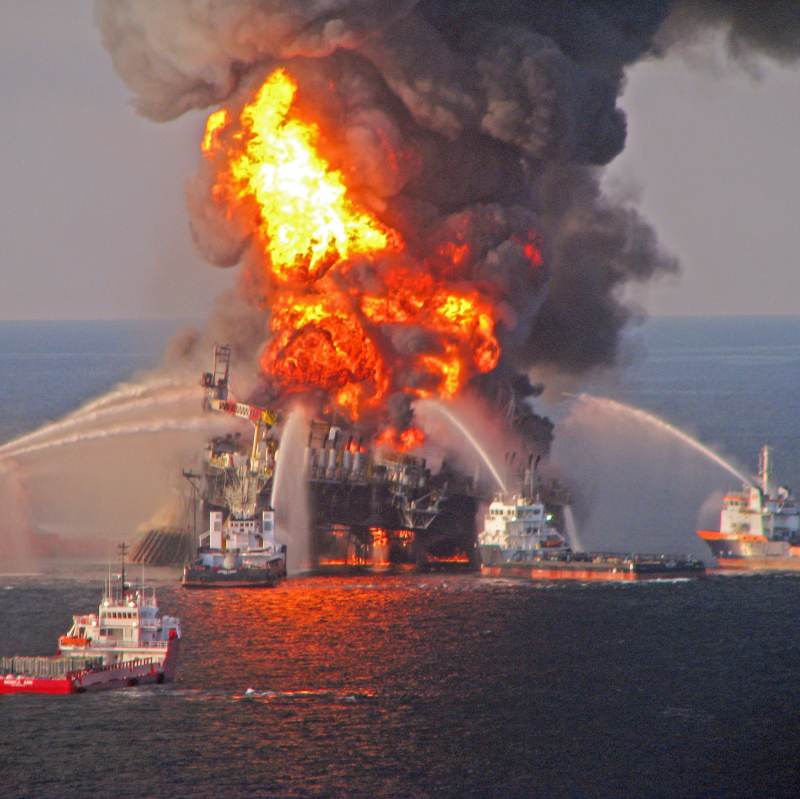
pinterest.com 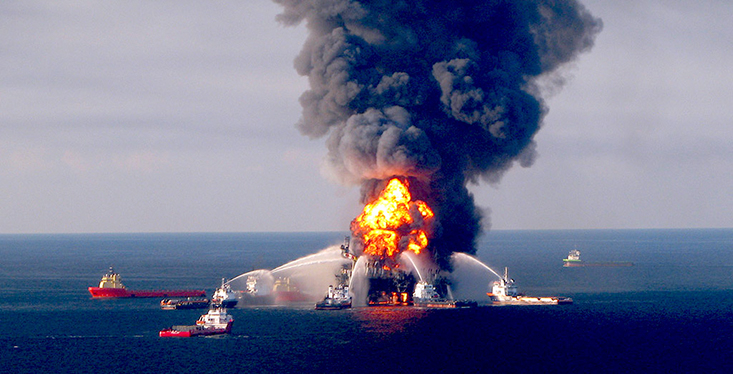
usf.edu -
About 100 kilometers (62 miles) northwest of Ciudad del Carmen, Campeche, in seas 50 meters (164 feet) deep, the semi-submersible drilling rig Sedco 135 was drilling the exploratory oil well known as Ixtoc I in the Bay of Campeche in the Gulf of Mexico. The well blew up on June 3, 1979, causing one of the worst oil disasters in history. Sedco 135 was drilling at a depth of around 3,600 meters (11,800 feet) below the seafloor at the time of the disaster. The drill bit had struck a zone of soft stratum the day before Ixtoc had the blowout and subsequent fire that led to her sinking. Hydrostatic pressure was then lost as a result of the lack of drilling mud circulation. The drilling mud was leaking through fissures that had developed in the rock at the bottom of the hole rather than rising to the surface. In order to seal off the cracks that were causing the loss of circulation, Pemex executives decided to remove the bit, run the drill pipe back into the hole, and pump materials down this open-ended drill pipe.
The well was swabbed when the drillstring was removed, which is an effect seen when mud must flow down the annulus to replace displaced drill pipe volume below the bit, resulting in a kick. This happened while the pipe on Sedco 135 was being removed. Normally, the blowout preventer's shear rams can be activated to block this flow (BOP). However, in this instance, the drill collars had been brought in line with the BOP and the BOP rams were unable to sever the thick steel walls of the drill collars, resulting in a catastrophic blowout. These rams are designed to sever and seal off the well on the ocean floor; however, in this case, the drill collars had been brought in line with the BOP.
After the drilling mud, there was a significant amount of oil and gas flowing at a pace that was still rising. The Sedco 135 drilling rig riser was destroyed when the oil and gas vapors ignited when they came into touch with the running pump motors. The BOP stack at the seabed was harmed by the collapse. Large amounts of oil were released into the Gulf as a result of the BOP's destruction.
When: 1979
Where: Gulf of Mexico
Oil spilt: 140 million gallons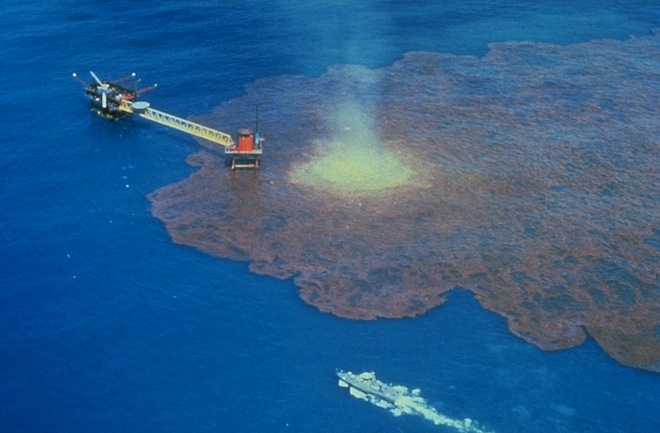
Wired 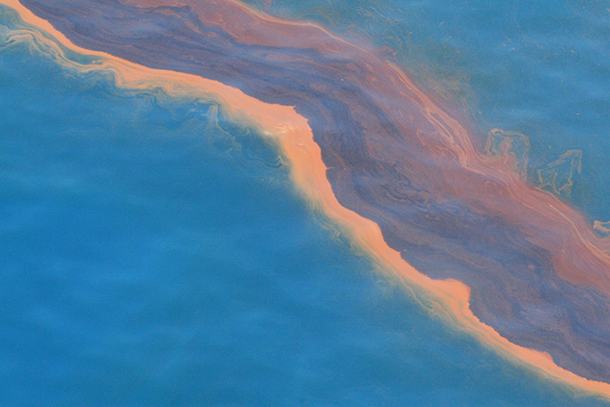
PRI's The World -
Greek oil tanker SS Atlantic Empress collided with Aegean Captain in the Caribbean in 1979, causing the fifth-biggest oil leak in history and the largest ship-based catastrophe, which released 287,000 metric tonnes of crude oil into the Caribbean Sea. The tanker finally sunk. On February 16, 1974, it was launched after being constructed at the Odense Staalskibsvaerft shipyard in Odense, Denmark.
The greatest tanker spill in history occurred on July 19, 1979, when the VLCCs Atlantic Empress and Aegean Captain collided during a tropical storm. The Atlantic Empress took the brunt of the collision even though both ships caught fire and the fire sparked an oil slick. After being pulled away from land, the Atlantic Empress burned for two weeks before sinking. On the other hand, the Aegean Captain's fire was put out, and the ship was towed to Trinidad. Despite the massive amount of oil spilled during the disaster, the beaches on neighboring islands suffered very little environmental harm; winds carried the majority of the oil out to sea, where it dispersed.
When the carriers caught fire, 27 crew men perished. After the accident, The Atlantic Empress's fire was uncontrollable, and it took over two weeks for it to sink. Despite the fact that the fire destroyed a substantial percentage of the oil shipment, a 30 by 60 mile slick was still clearly visible. It's impressive that no noticeable pollution made it to the coastlines of the adjacent islands. Despite this, the affected nations never conducted an impact study, and later, $30 million would be paid out in claims. The Atlantic Empress finally sank on August 3, 1979, after burning for two weeks.
When: 1979
Where: Caribbean Sea
Oil spilt: 88.3 million gallons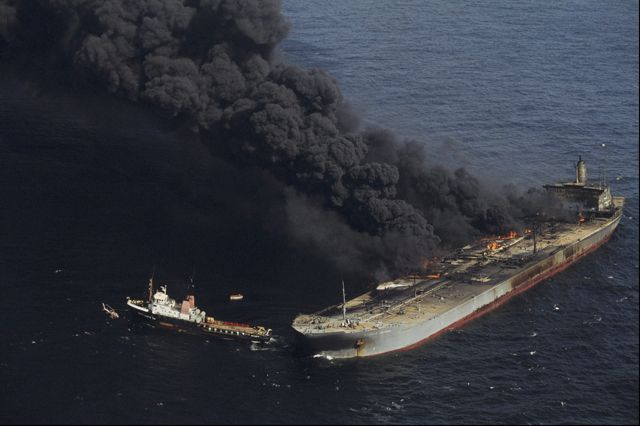
largest.org 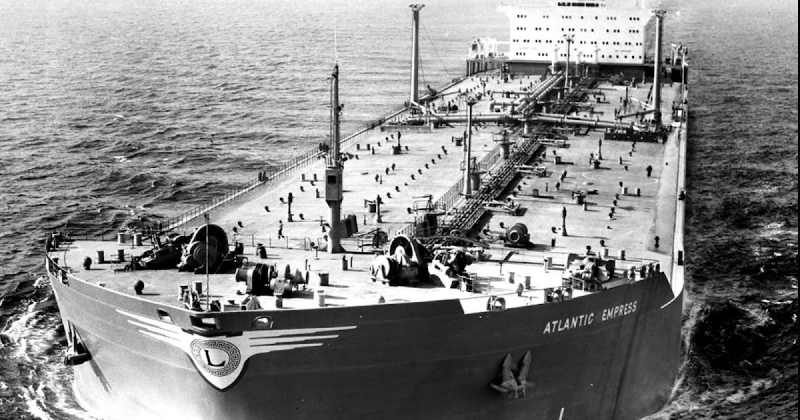
Herry's Journal -
On August 6, 1983, the Spanish tanker caught fire at Saldanha Bay, some 70 miles northwest of Cape Town, South Africa. This is when the MT Castillo de Bellver oil disaster started. It was passing through a delicate location renowned for its seabird rookeries and significant commercial fishing grounds while transporting 250,000 tonnes (300,000 cubic meters) of light crude oil. After being abandoned while on fire, the flaming ship broke apart while floating offshore. Three crew members died. Explosives were used to sink the bow and capsize the stern. Between 145,000 and 170,000 tonnes of oil were released into the ocean. As the slick moved out to sea, the effects on land were thought to be minimal. The 1,500 gannets that were oiled on a nearby island were the only tangible result.
On average, 50,000–60,000 tonnes of oil are thought to have burnt or flowed into the ocean. Nevertheless, despite the considerable amount that was spilled, cleanup efforts were not very necessary, despite some dispersant spraying. On the local seal population as well as the neighboring farms and livestock, which were doused in "black rain"—airborne oil droplets that dropped for the first 24 hours—there was no environmental damage. Locally abundant fisheries and fish stocks were not significantly impacted.
When: 1983
Where: South Africa
Oil spilt: 79 million gallons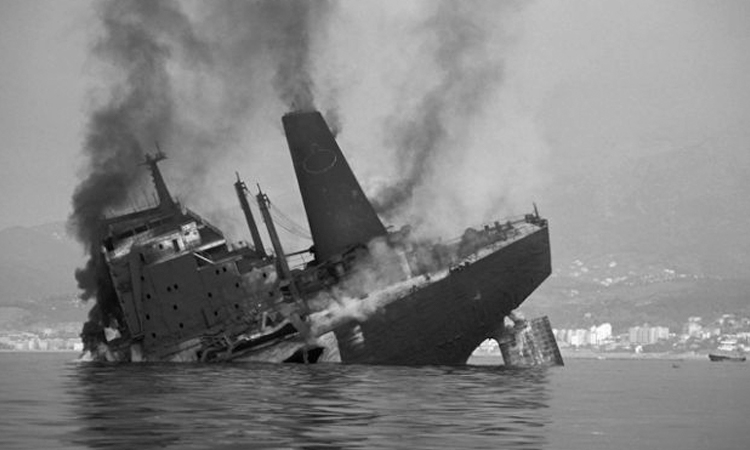
idealresponse.co.uk 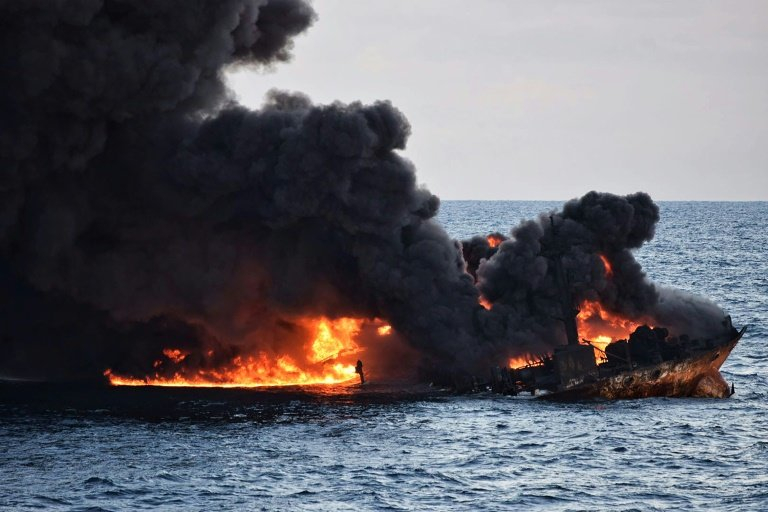
Phys.org -
The tanker Amoco Cadiz ran aground off the coast of Brittany on March 16, 1978, as a result of a gear failure. Over the course of two weeks, the whole shipment, which included 4,000 tonnes of bunker fuel oil and 223,000 tonnes of light crude oil, was dumped into the sea. The pollutant is thought to have grown by up to five times as a result of the oil's rapid formation of an emulsion. 320km of the Brittany coastline were affected by the end of April 1978. Strong winds and rough seas prevented cleanup efforts, which led to some of the channel islands becoming contaminated as a result of the unfavorable weather conditions.
This tragedy caused the greatest loss of marine life ever documented as a result of an oil leak at the time of the disaster. In the two weeks that followed the incident, millions of dead mollusks, sea urchins, and other benthic species washed ashore. The spill caused the deaths of about 20,000 birds, with diving birds accounting for the majority of them. An estimated 9,000 tonnes of oysters were destroyed due to contamination and to maintain market trust, severely affecting oyster cultivation. Along with tourists, other shell and fin fisheries, seaweed collection, and others were badly impacted in the near term.
When: 1978
Where: English Channel
Oil spilt: 69 million gallons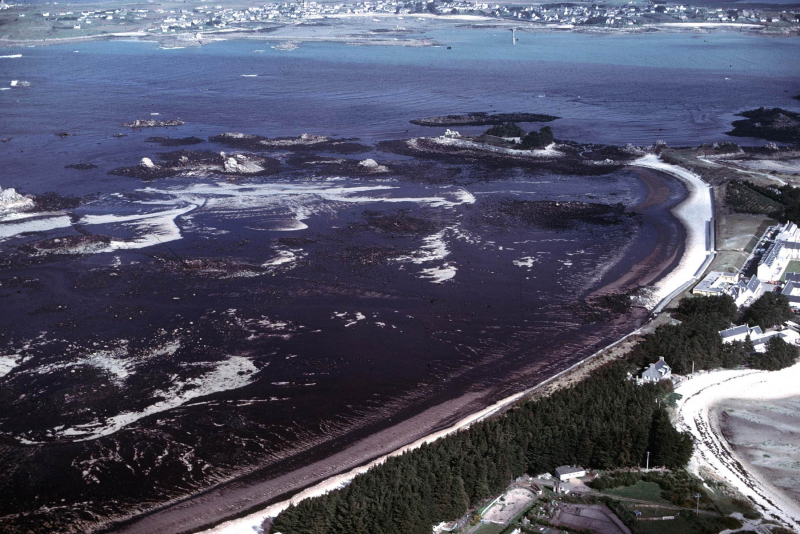
oil-spill-info.com 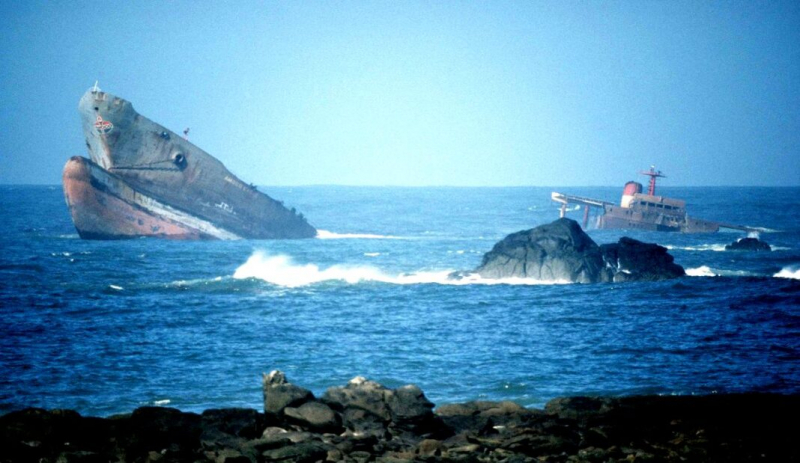
maritimecyprus.com -
Troodos Shipping leased the VLCC (very large crude carrier) MT Haven, formerly known as Amoco Milford Haven (a company run by Loucas Haji-Ioannou and his son Stelios Haji-Ioannou). Six Cypriot crew members were killed and up to 50,000 tonnes of crude oil were spilled into the Mediterranean in 1991 when the ship, which was carrying 144,000 tonnes (1 million barrels) of crude oil, burst, caught fire, and sunk off the coast of Genoa, Italy. It burned for three days before splitting in two and sinking.
The Italian authorities responded rapidly, dispatching hundreds of workers to battle a hard-to-reach fire and deploying more than 10 kilometers (6.2 km) of inflatable barriers around the vessel to contain the leak. These barriers were sunk a meter below the surface. In an effort to lessen the impacted coastline area and facilitate intervention, MT Haven was to be hauled along the coast on day two. A steel rope was wrapped across the rudder as the bow descended below the water's surface, and tugs exerted towing pressure. The ship's back, however, became rapidly apparent, and the bow part came to rest in 450 meters of water.
The Italian authorities launched a massive cleanup effort, which greatly reduced the disaster's scope. The harm might have been far greater if cleanup measures had not been made. While additional oil was pumped out of the burning ship, most of the oil that had been spilled was burnt on the surface. However, during the following ten years, the pollution severely harmed the fisheries along the shores of both France and Italy.
When: 1991
Where: Italy
Oil spilt: 45 million gallons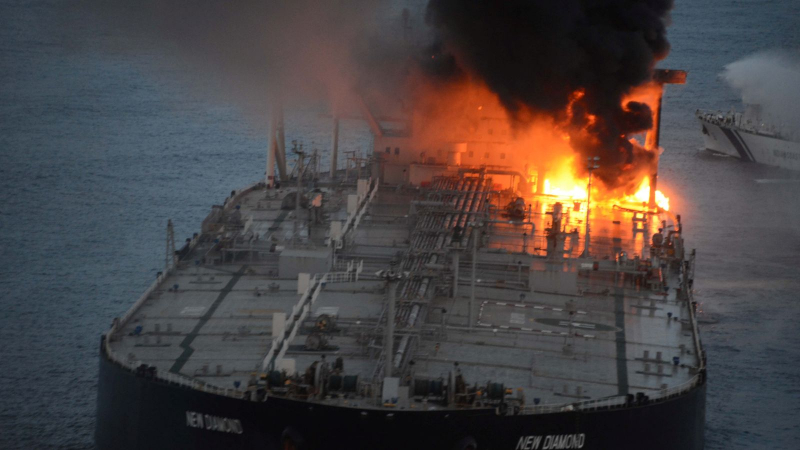
Sky News 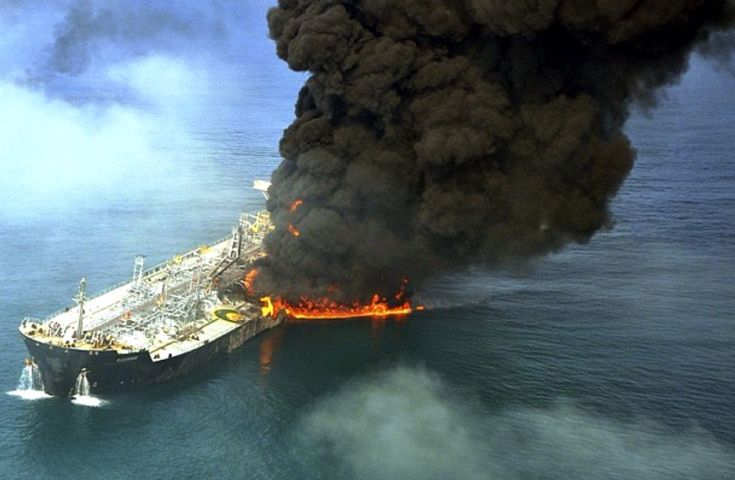
Pinterest -
One of the worst oil spills ever was that which occurred in Torrey Canyon. The supertanker SS Torrey Canyon capsized in 1967, spewing an estimated 25–36 million gallons (94–164 million liters) of crude oil off the south-west coast of the United Kingdom. The Royal Navy and Royal Air Force used planes to bomb the wreck in an effort to lessen the damage. The oil and other materials used to try and lessen the damage damaged hundreds of kilometers of shoreline in Britain, France, Guernsey, and Spain. The Torrey Canyon oil disaster, which still ranks as the worst in UK history, was the worst oil spill in the world at the time. Significant changes in marine legislation and how to deal with oil spills resulted from it.
More than 15,000 sea birds died and washed up on the coastlines, leaving beaches covered in knee-deep mud. It took some species decades to rebuild their numbers. However, only a small portion of the overall loss was represented by the early deaths of mammals and birds. The incident's consequences persisted for years, impacting everything from plankton and small invertebrates at the base of the food chain all the way up to fish, birds, and mammals, including mussels and clams. The British started a cleaning initiative that required using a lot of strong chemicals. But this simply served to exacerbate an already dire situation.
The idea was that the chemicals would break down the oil, allowing natural microorganisms to spread and eliminate it. The chemicals, however, destroyed whatever aquatic life they came into touch with, including fish, seaweed, and limpets. The harmful effects were further exacerbated as the chemicals accumulated on beaches before the tide carried it away. It took 13–15 years for the chemically affected areas to recover. Comparatively, this takes about five times as long in areas where the oil was naturally dispersed by wind and sea.
When: 1967
Where: Cornwall, England
Oil spilt: 36 million gallons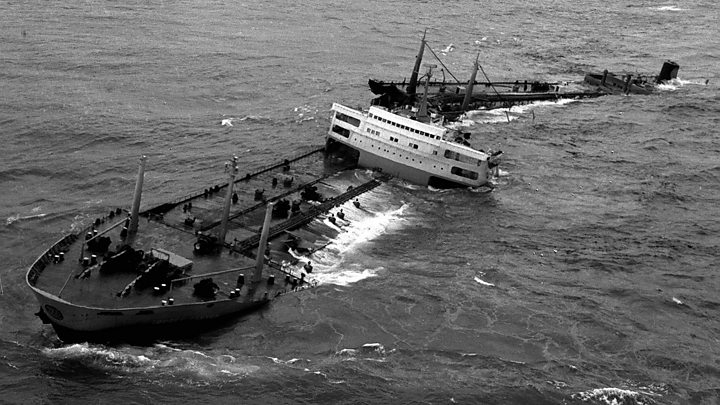
BBC>Bethan Bell 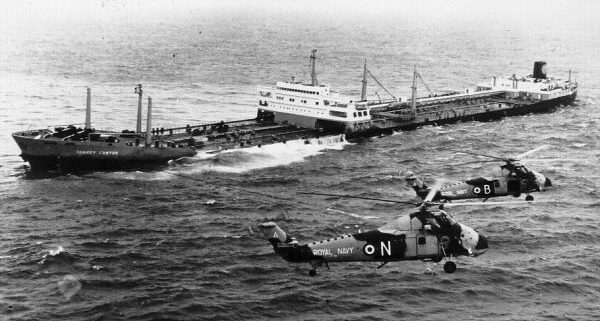
boomeranged.co.uk -
On March 24, 1989, an oil leak from the Exxon Valdez occurred in Prince William Sound, Alaska. At 12:04 a.m., the Exxon Valdez, an oil supertanker owned by Exxon Shipping Company and headed for Long Beach, California, collided with the Bligh Reef in Prince William Sound, 1.5 miles (2.4 kilometers) west of Tatitlek, Alaska. Over the course of the following few days, 10.8 million US
11 million gallons of oil spilled into the ocean when the ship's hull was split through by the crash. It was the greatest single oil leak in US seas up to that point. Initial efforts to control the spill were unsuccessful. The oil slick expanded in the months that followed. A total of 1,300 kilometers of coastline were impacted. Later investigations revealed that Exxon Valdez captain Joseph Hazelwood had been drinking prior to the crash and had handed the helm to an unauthorized third-party mate.
An estimated 250,000 seabirds, 300 seals, 250 bald eagles, and 22 killer whales perished as a result of the incident. Sea otters were badly impacted, with an estimated 3,000 fatalities or 40% of the population in the Sound dying. 25 years after the occurrence, the sea otter population didn't entirely recover until 2014! Additionally, other sources have the overall economic loss at roughly $2.8 billion, and thirty years later, there are still isolated pockets of crude oil in some places.
When: 1989
Where: Alaska
Oil spilt: 11 million gallons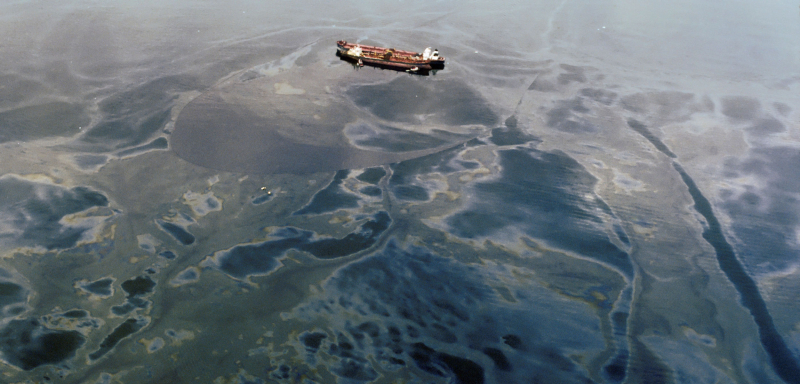
hakaimagazine.com 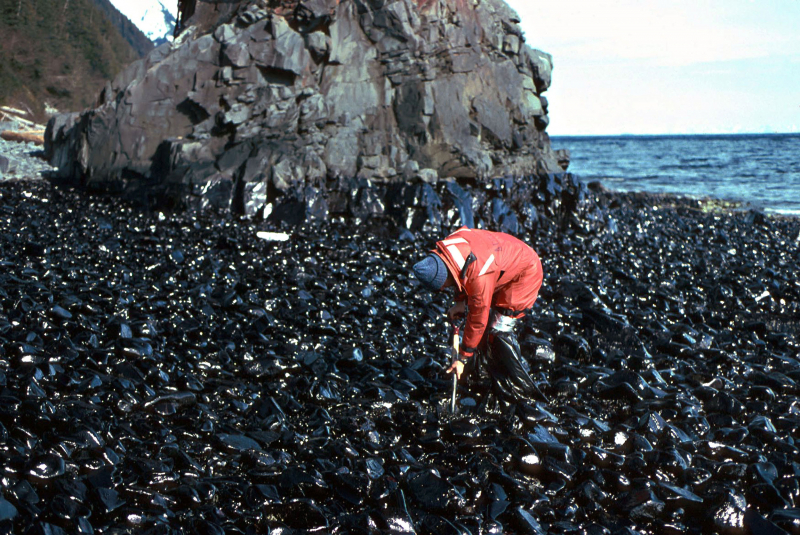
hakaimagazine.com












